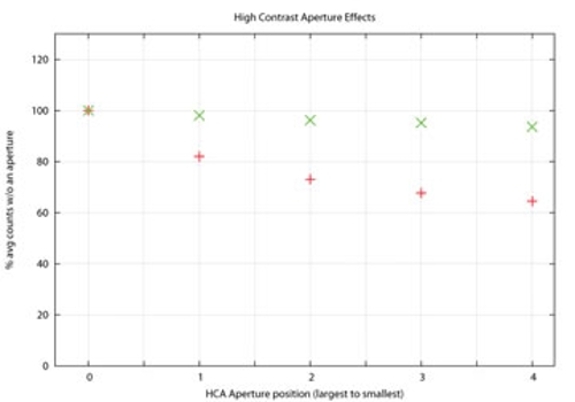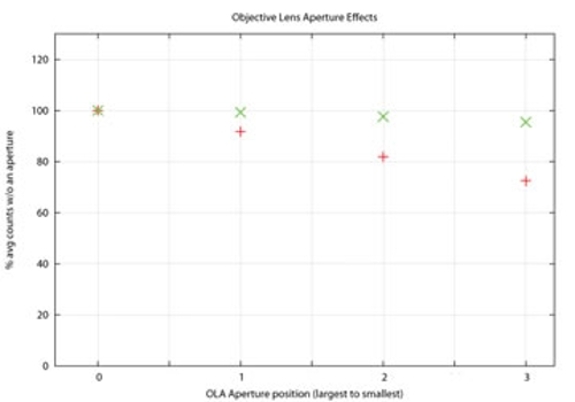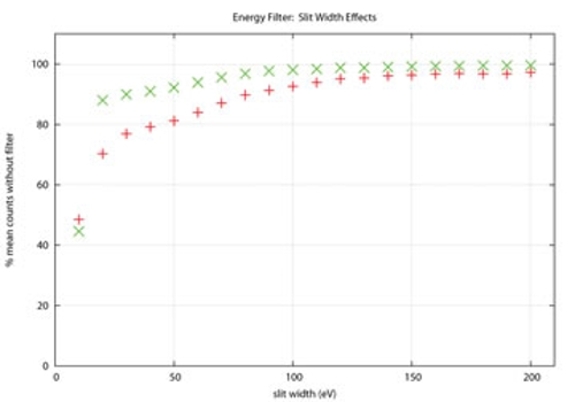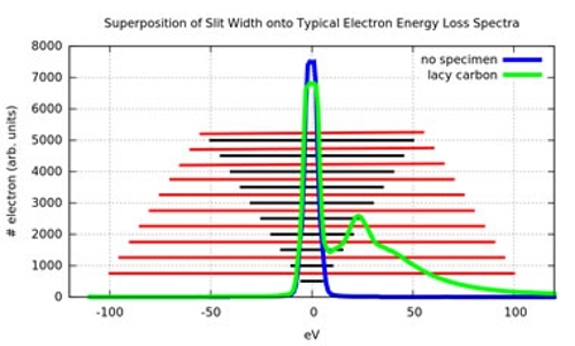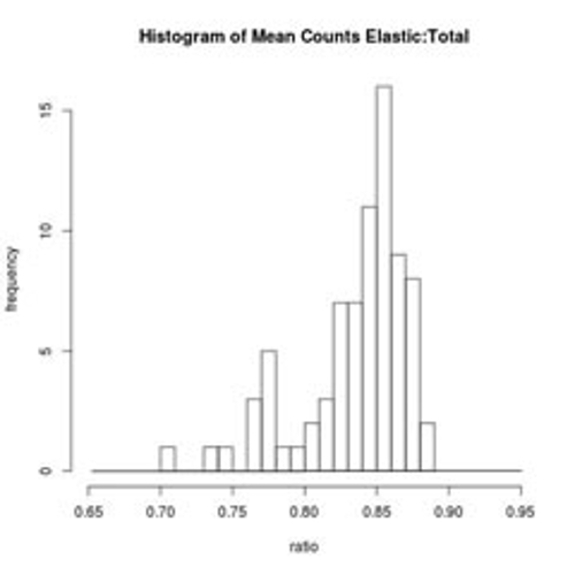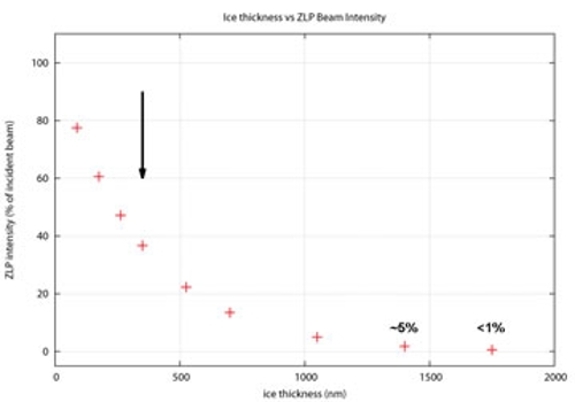Another way to think about the loss of beam intensity due to filtering out inelasticaly scattered electrons is to examine the ratio of the mean counts in an image when only elastic electrons are collected vs the mean counts in the same image when all electrons are collected. The histogram to the right shows this ratio calculated from over 75 image pairs recorded from a standard Au/Pd waffle grid using the 3200FS during calendar year 2014. Elastic images were acquired using a 30 eV energy slit (centered with the slit set to 10 eV) and the 2nd image was acquired immediately afterwards simply by removing the energy slit. Given that the images were recorded from several different waffle grids (and at different locations on each of the individual waffle grids) and were recorded over an entire year during which the electron beam varied in intensity due to issues with the field emission gun (FEG), this distribution is relatively tight, with a mean ratio of 0.835 (± 0.038) and a median value of 0.847. This value is similar to the measurement in the plot above showing the loss in beam intensity when the energy slit width was set at 30 eV, and indicates that under these conditions, ~15% of the incident electrons consistently lose some amount of energy as they pass through a typical Au/Pd waffle grid.
NOTE: For pure elements and some well characterized compounds (and possibly some mixtures of materials), it is possible to use such image pairs to estimate the thickness of the specimen. This is based on the fact that the differences between an image formed from all the electrons (no energy slit) and an image formed from only elastically scattered electrons (a narrow energy slit, e.g., 10 to 20 eV) are due to the removal of the inelastically scattered electrons, and thus the image pair quantifies the amount of inelastic scattering. If one knows or can estimate the inelastic scattering properties of the specimen, it is possible to correlate this measured amount of inelastic scattering with the thickness of the specimen. This correlation is referred to as a thickness determination, and an image generated in this manner is referred to as a thickness map.
The key to generating an accurate estimate of thickness is knowing the average distance an electron can travel in any given material before inelastic scattering occurs (a quantity referred to as the inelastic mean free path). In fact, if the inelastic mean free path is known, the following formula can be used to determine the thickness of the material in question:
thickness = MFPinelastic * ln( I0 / IZLP )
where thickness = specimen thickness (in the units of the MFP)
MFP = mean free path (usually measured in nm)I0 = total incident electron
IZLP = electrons in the zero loss peak
NOTE: the ratio I0 / IZLP is the inverse of what is shown in the histrogram above
For the Au/Pd waffle grid used to produce these data, the inelastic mean free path will depend on the exact thickness of the carbon support film and both the exact thickness and the exact atomic composition of the Au/Pd layer. In general, these are unknown quantities and thus exact thickness measurements are not possible in this case. In such cases, the formula shown above is often rearranged to produce a fractional ratio of the (unknown) inelastic mean free path:
ratio = thickness / MFPinelastic = ln( I0 / IZLP )
where ratio is in fractional units of MFPinelastic
However, the fact that the ratios shown above are reasonably consistent means that these properties are relatively consistent both in different locations of an individual waffle grid and between different waffle grids.



